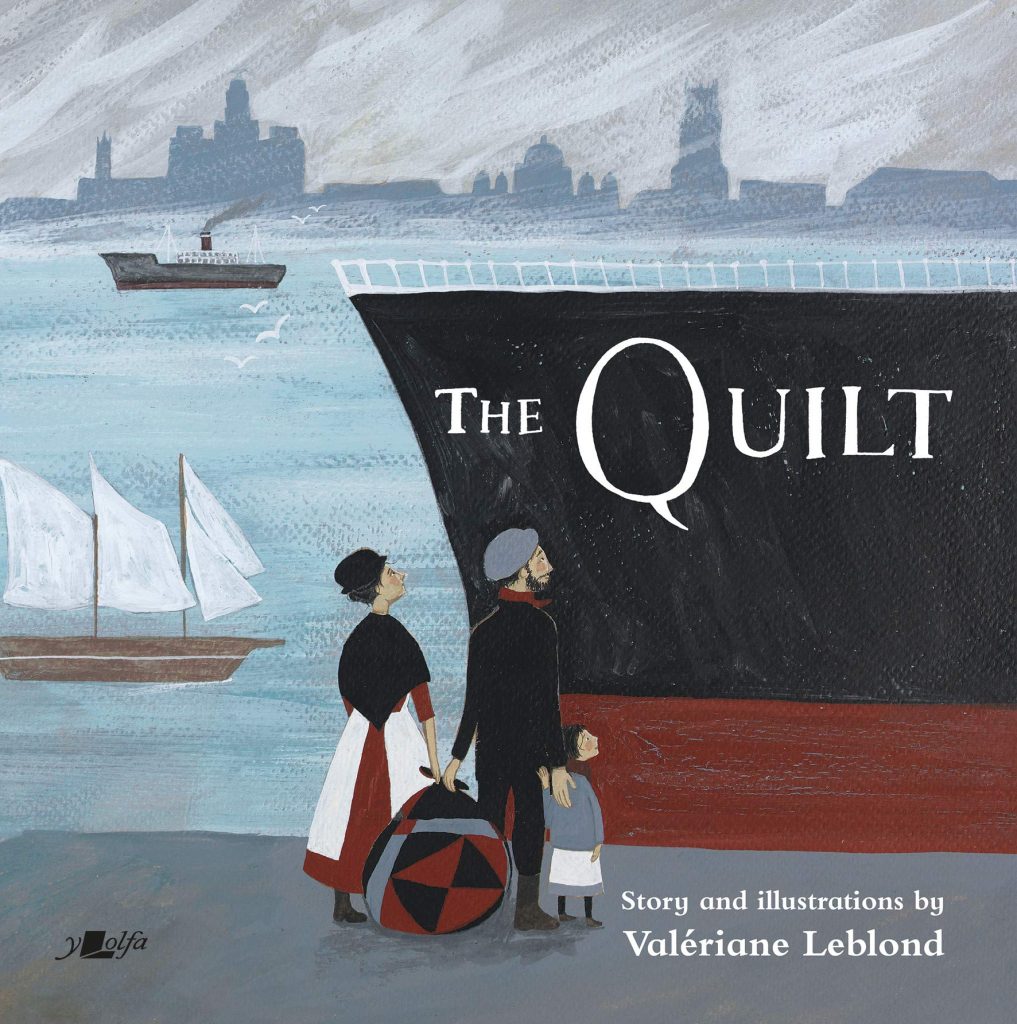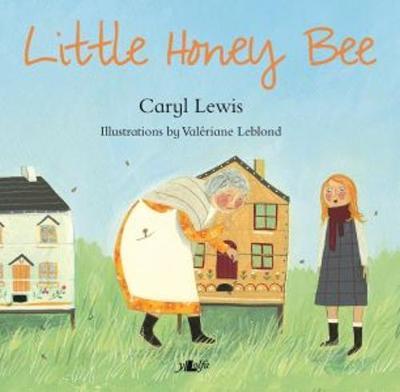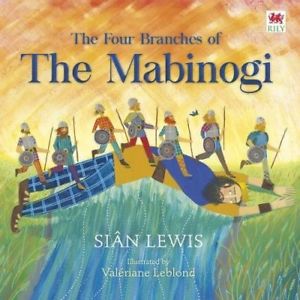
Popular illustrator and artist Valériane Leblond has written her first book for children, as well as painting the images that bring the story to life. Valeriane was brought up in Angers, France but moved to Wales in 2007 and now lives in a farmhouse near Aberystwyth. Valeriane speaks French, English and Welsh.
The Quilt (Y Lolfa) is a beautifully illustrated hardback offering a message of hope and hiraeth. The picturebook pages are captivating taking us from rural Wales at the turn of the 20th century to the New World via Liverpool. We love the colour palette and how this changes as the family enter America (reminiscent of Kyffin Williams’ tone in his Patagonian paintings) and the buzz of Liverpool is Lowry-esque in it’s industrious hustle and bustle. This truly is a stunning book and we felt compelled to get in touch with Valériane to find out more.
Could you tell us how you became an artist?
I’ve always enjoyed drawing, painting and being creative in general, so it happened quite naturally. I had another job for a few years before being able to go full time though.
What was your own journey to settling near Aberystwyth?
I had a Welsh boyfriend that I met at University in Brittany and I followed him home here to Ceredigion. I didn’t know much about Wales at the time, but I felt welcomed here, and I fell in love with the place and its people. Now I’ve got three sons who were born here, I’ve learnt the language and I feel that I can make a contribution through my art.

What are you reading at the moment?
I’m reading a novel called Le Principe by Jérôme Ferrari about the physicist Heisenberg. It’s sometimes a bit too clever for me!
The Quilt is an incredible achievement. How long did it take to complete?
Thank you! It must have taken 6 to 8 months to write, and about 3 months to illustrate. I was working on other projects while writing, but I worked full time on the illustrations.
What attracted you to the story?
I always wanted to illustrate a story about a Welsh quilt, I think it is a fascinating craft, visually and historically. And I’ve always been interested in movements of people, especially to North America as my father was from there.
What are your methods of illustration?
I have several techniques, and I love varying and experimenting. I always use a sketchbook to draw roughly the silhouettes and plan the compositions. For The Quilt, I worked with gouache and coloured pencils on paper, and to obtain the muted palette and the sepia overall tone I dyed the paper with brown ink before painting.
The story absolutely suits your illustration style – particularly the period and lifestyle – is this just coincidence?
No, it’s not just coincidence. Being both the author and illustrator has been a very interesting experience: the text has been feeding the illustrations, the illustrations have been modelling the text too. There are pictures that I just wanted to paint for a book some day, like the double page with a small ship in the big ocean, and this was the perfect opportunity.
Did it involve a lot of research?
Yes, there was a lot of research involved. I got help from the historian Menna Morgan in the National Library, and from quilt expert Jen Jones of the Welsh Quilt Centre and I used pictures and paintings from different archives as references for the illustrations.
What’s the most interesting thing you learned from your research on The Quilt?
I loved learning about anything food-related : what people ate on the ship, the ‘discovery’ of different food like watermelons, pumpkins, sweetcorn in North America. I would love to explore further the relations between food, home, and place in the future, in a book or in my art.
What was the inspiration for the design and colours of the quilt itself?
I needed a quilt design that would be realistic for the period. After talking to Jen Jones I realised that a bold black and red flannel quilt would suit the story, and I used an existing quilt from her collection.
There is a symmetry between the family’s new life in America and the life they leave in Wales. How did you go about making these connections?
I wanted to show that places have a lot in common rather than insist on the differences. I’m interested in the idea of “home”, and it is a universal theme we can all relate to, whether we are grown-up or not, wherever we live or come from.
Do you consider yourself an artist or an illustrator?
It’s difficult to answer, but I would say both. When I work with another author, I am definitively an illustrator, but for The Quilt, I might tend towards being an artist!
The Quilt is a fine example of a picturebook where the images give as much information as the words. Do you have any favourite picturebooks?
My all-time favourite is The Ox-Cart Man by Donald Hall and Barbara Cooney. The text is beautifully written and works by itself, and Barbara Cooney’s pictures are extraordinary. I also love Where the Wild Things Are by Maurice Sendak. When pictures go beyond the text it literally creates a new dimension.
The book was published in Welsh first then English. Are there any differences between the two versions? Which language did you originally write it in?
I wrote it in French, my mother’s tongue, first. Then I re-wrote it in English, and finally in Welsh. I also worked on the pictures before finishing the text, so it’s difficult to say what is the original version! I think the Welsh text might be more poetic, but it might be down to the language itself!
Can you tell us something about your next book/idea/future plans?
I’m currently working on a language book with Rily Publications, which involves thousands of small pictures, and I’m also about to start on a very exciting book about Siani Pob Man, an eccentric woman who lived on the beach near New Quay in the 1900s’.
If you weren’t an author/illustrator what would you do?
Maybe a teacher? Or a researcher of some kind? There are a lot of things I would enjoy doing I think!
Thank you / diolch / merci Valériane for answering our questions. The Quilt by Valériane Leblond (£5.99, Y Lolfa) is available now from your local independent bookshop. You could also order it direct from Y Lolfa.



